
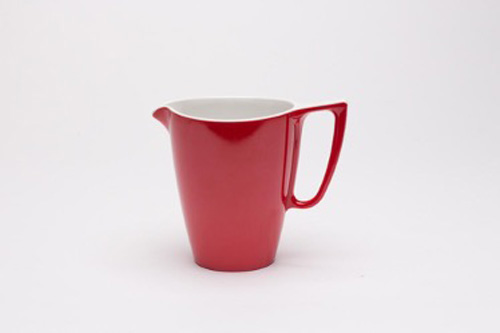
Designed by David Harman Powell, manufactured by Melmex.
Early 1960s
Plastic
124 × 154 mm (12,4 × 15,4 cm)
The simple design of the jug may seem similar to modern IKEA jug, but it was actually created in the early 1960s. Melmex is the trade name of the material called melamine formaldehyde, a type of plastic. David Harman Powell’s innovative plastic designs played a major part in the acceptance of the material as a serious alternative to the traditional materials. This Jug reflects the diversity and modernity of British design at that time.
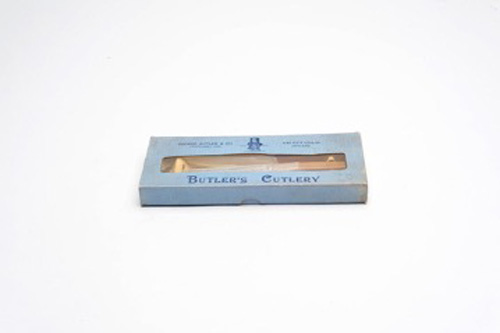
Manufactured by George Butler & Co. Ltd of Sheffield, England.
Early 1950s
Metal, Wood
242 × 98 mm (24.2 × 9.8 cm)
The Butler's Cutlery is a part of the display because of its British origins. Dinner parties were an important part of social life in Britain since the Victorian period. Manufacturers responded to the market demand for tablewares by making specialised dishes and utensils for different food. Designed in the 20th century, a cutlery set is an everyday object that most people engage with.
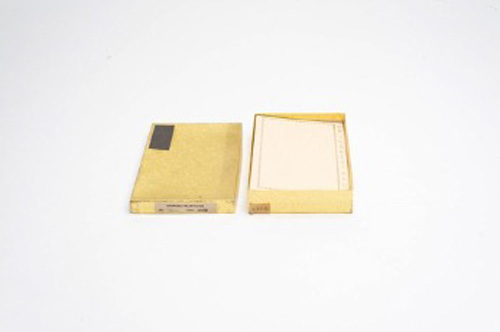
Manufactured by Leathersmith of London.
Early 1950s
Paper, leather
36 × 171 mm (3.6 × 17.1 cm)
The address book inside of the golden box was created by the Leathersmith of London, a manufacturer that has been producing hand-made books for over two centuries. As practical stationery in the past, the address book encompasses a variety of designs within its simple function. The audience can think of one’s relationship with design through a commonplace object.
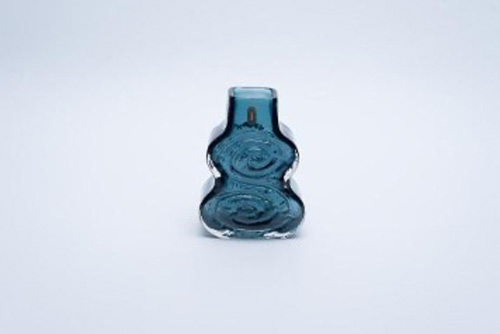
Manufactured by Whitefriars, designed by Geoffrey Baxter.
c.1967 - 1970
Glass
175 × 130 mm (17.5 × 13 cm)
This glassware is a part of the revolutionary textured range that was launched in 1967 by Geoffrey Baxter for Whitefriars studio glassworks. The use of man-made material such as nails to create texture was entirely new. Engraving remained in an important medium for glass design in England where distinct national styles emerged.
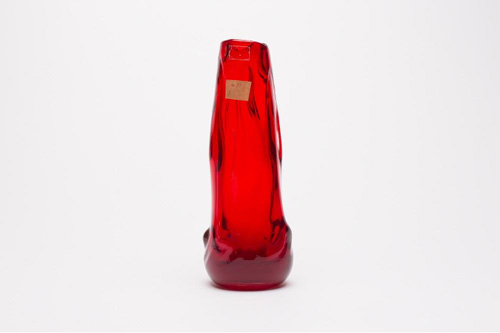
Manufactured by Whitefriars, designed by William Wilson and Harry Dyer.
c.1963 - 1972
Glass
240 × 100 × 100 mm (24 x 10 x 10 cm)
Color and surface textured glass were explored in new ways in the post-war Britain of the 1960s and 70s. Ruby colour of the lamp base gained immense popularity after its first introduction in 1940, at the time where British consumers were seeking for bright, strident colours after the second world war. The Knobbly effect was created by using an S-shaped tool to manipulate and twist the gather of molten soda glass prior to blowing.
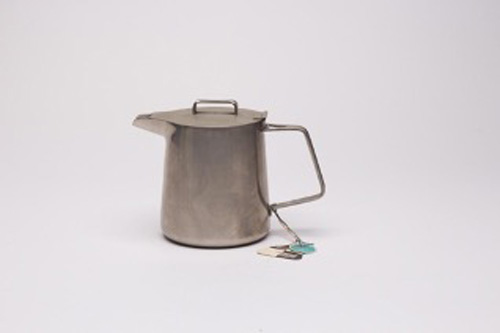
Manufactured by Old Hall Tableware Ltd, designed by Robert Welch.
Early 1950s
Stainless steel
145 × 200 mm (14.5 × 20 cm)
The 1950s was a decade of great change as it was a start for the post-war generation quest for all things “new” and “modern” in all areas of design and manufacturing. Teapot is one of the essential household items and the stainless steel material stands for its durability and a great application for metal cutlery.

Manufactured by Old Hall Ltd, designed by Robert Welch.
Early 1950s
Stainless Steel
234 × 123 mm (23,4 × 12,3 cm)
Influenced by Scandinavian Modern Aesthetics, the candlestick is a unique part of the display, with its clean lines and distinctive design. Old Hall manufacturer pioneered the use of stainless steel as a substitute for silver tableware in Britain because it did not need regular polishing and did not tarnish.

Manufactured by Elkington & Co., England
1960
Stainless Steel
100 ×150 × 700 mm (10 x 15 x 7 cm)
The toast rack combines features of functionality and modern design of domestic objects of the 1960s. As the inventor of silver-plating, Elkington & Co, founded by George Richards Elkington and Henry Elkington, continues to produce jugs, trays as well as cutlery pieces to this day.